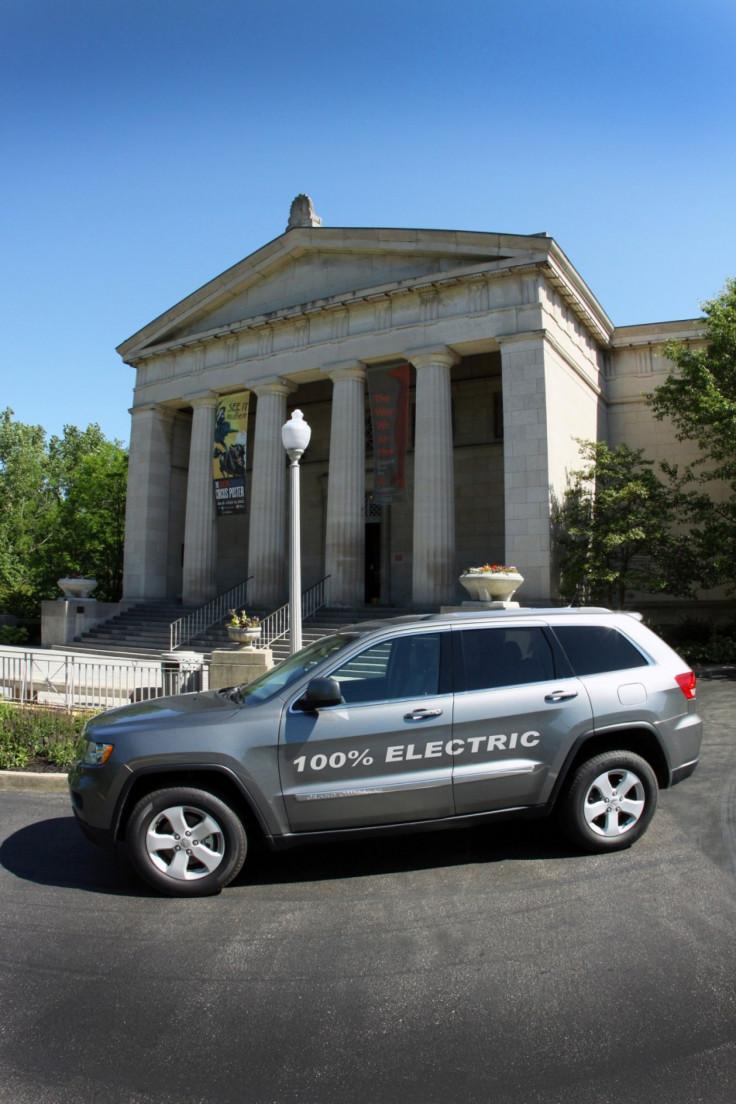Specialty Auto Co. Revamps Jeep Grand Cherokee, Other SUVs, As Electric Vehicles

Here's an automaker's dilemma: The demand for hybrid and electric vehicles is rising, and so is the pressure on the companies to manufacture them. But gas-guzzling SUVs, even after years of negative press as unnecessary extravagancies, are still remarkably popular in the United States.
So how should an auto-industry entrepreneur choose where to expand its product line? For Amp Electric, a company that converts gas-powered models into zero-emission electric ones, the choice was clear.
We looked at the biggest segment of cars, and SUVs are the largest selling, Steve Burns, president of Amp Electric, told the International Business Times in a phone interview Wednesday. We said, 'Let's do an electric SUV.' From that point, we started looking at which ones.
Burns said SUVs still are the largest selling segment in the United States, at 26 percent, which is why the company has chose to focus on them.
Amp Electric Vehicles made its first splash in the market with the 2010 Chevrolet Equinox, which it converted to an an all-electric version. From the Equinox, it progressed to the Mercedes M-Class SUV. Wednesday, the company said in a press release it had worked out a conversion of the 2012 Jeep Grand Cherokee, which Amp will unveil in January at the 2012 North American Auto Show in Detroit.
Beginning with a world class vehicle, and adding Amp's electrification, results in an EV that offers everything SUV customers expect: smooth powerful performance, zero emissions and up to a 100-mile range, said Jim Taylor, Amp's CEO.
Targeting Fleets, SUV-lovers
The main drawback on the surface is the Jeep's cost. Consumers will pay for the vehicle and the conversion. Burns said pricing will be revealed in Detroit, but that the vehicle would be a direct competitor to the Tesla Model S, which starts at $57,400 before a $7,500 tax credit.
According to Burns, that might be a good deal for companies with large fleets: the executive said he was already in discussions with FedEx and UPS. Burns explained fleets are a natural starting market for EVs because the trucks in them have a defined route and can come back at night to re-charge. Companies are also more likely to be willing to absorb the up-front costs if it is likely they will end up saving money over a five-year period.
The Amp Jeep will have a 37-kilowatt-per-hour battery pack and a range of 100 miles, which is on the low side, Burns said. It'll take about six hours to charge. Burns said he's targeting the Tesla Model S, a sedan, as competition because of the demand for SUVs. Amp thinks it can lure consumers with the options an SUV offers over a sedan.
A lot of people ask, 'How do you expect Jeep to compete with a sexy Model S Tesla?' Burns said. But for as many people who like a sedan, there are a lot of people who like four-wheel drive, sitting up high, or whatever the SUV has to offer. There's a reason why SUVs are the highest-selling segment.
Not Trying to Reinvent the Wheel
Amp's core premise as a company is derived from from the relative cost-effectiveness of converting gas-powered cars into ones with electric capabilities, rather than trying to build electric vehicles from scratch as competitors have done.
Building an electric car from scratch, Burns said, costs more than $1 billion. Amp is able to convert gas-engine vehicles into electric at about one-hundredth of the cost.
Not that the company hasn't face speed bumps already: GM, for instance, wasn't receptive to Amp's conversion of the Chevy Equinox.
We got no love from GM. They wouldn't answer the phone, Burns said. We attribute that to it conflicting with the Volt message -- to have an all-electric vs. the hybrid-electric. Without any love, it was too hard.
Chrysler answered the phone. And so, Amp will add the Grand Cherokee to its list of conversion cars. It follows the company's method of choosing which cars they will convert.
You don't want to take chances, Burns said. If we built one from scratch that's styling, handling or interior was amiss, you know. But jumping on a five-star crash rated vehicle, you take all risk out of equation. You go with what's proven, and you figure there's a market segment that wants it electric.
© Copyright IBTimes 2025. All rights reserved.





















